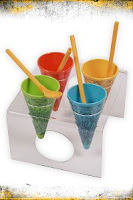
The Forever Fernwood Cemetary in Mill Valley California features all natural burials.
No Embalming is permitted, and you have to use a biodegradable casket if you use one at all. To preserve the rainforests, no exotic woods, like teak or mahogany, can be used. Most of the dear departed are, in fact, buried without casket or shroud, after being shipped in on dry ice.
Land conservation is a major part of the pitch. One of the company's goals is to conserve land that might otherwise be developed. Few companies would try to develop a mini-mall over gravesites.
"Your last act of life," Boileau said, "becomes one of land preservation."
No Grave markers are permitted. "We issue the family a Google map with the GPS coordinates," said Jay Boileau, executive vice president of Forever Enterprises, owner of the 32-acre facility.



